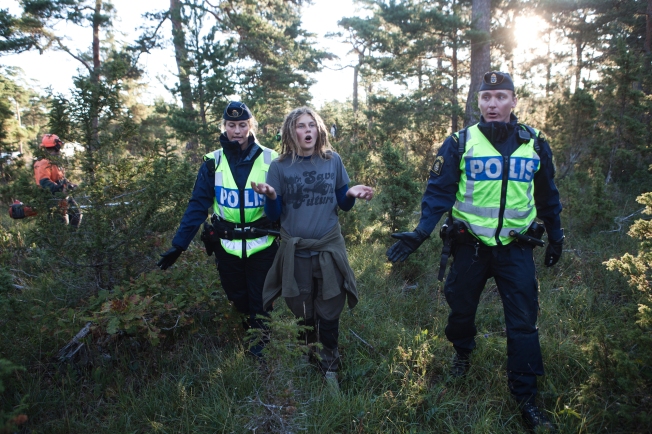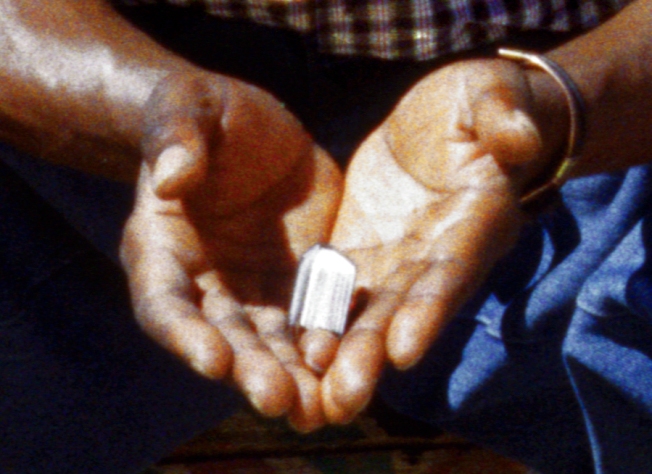This April, we’re doing a couple of talks and presentations in the south of Sweden, a public screening, a workshop, and a rave cinema (which equals a secret outdoor screening).

Extremely lightweight portable cinema screen
On April 4, Kalle Brolin will present the Sunshine Socialist Cinema at the public library in Bromolla. The talk starts at 19.30 and is free of charge. There will be trailers for the films of the upcoming season, among other things. On the day before the talk, Paula Von Seth will hold a workshop for local youth, on the theme of images of the future. These videos may become part of our screenings further down the road.

Screen snaps on
On April 17, we’re doing a screening of the Enthusiasts Archive, a collection of amateur films made by Polish workers within the context of the film clubs under socialism. The archive has been compiled and the films restored by artists Marysia Lewandowska and Neil Cummings.
From the website Chanceprojects:
“With 16mm film stock, cameras and editing tables supplied by the factory/state, a large number of clubs were created throughout Poland from 1950’s onwards. The films made, range from 2-minute animations, short experimental films, documentaries on family, village, city or factory life; to historical dramas, features and ambitious mini epics.
We are aware of around 300 clubs registered since 1960 in a number of different industrial zones e.g. Nowa Huta, Biesko Biala, Poznan, Oswiecim, Bialystok, Warszawa, Katowice, Szczecin and Gdansk.”
The screening is arranged in cooperation with the International Cafe of Angelholm.

Widescreen format
Throughout April and May we’re doing a workshop with the artstudents of Nordvastra Skane Folk High School. The students will work on art videos imagining The Future, and these videos will be screened to the public by the end of May. The outdoor screening takes place on the evening of May 25, on the lawn in front of the folk high school, and will celebrate the 100 year jubilee of the school. A folk high school is a form of popular adult education, and originated as part of the peoples movements of 19th and 20th century Sweden. The screening will start with a slideshow of old glass print photographs of the school from when it was newly built. As part of the screening, we will also show the film We Have No Art by Baylis Glascock, a documentary made in 1967 about Sister Corita Kent. Sister Corita was a Roman Catholic nun who taught at an art school in Los Angeles.

Fits in a coffin-sized box on wheels
On April 25th, Kalle Brolin will present the Sunshine Socialist Cinema at the Glimakra Folk High School. There will be trailers for the films of the upcoming season, among other things.

Screen measures 4 meters wide and 1,80 meters high
As we’ve received a large sum of money to produce a portable version of our solar powered cinema and take the show on the road, we will begin in mid-April with a secret outdoor screening, part of our Rave Cinema series. More info on this momentarily.

Portable screen in full glory obscures house
Our program this summer is starting to take shape, and we’ve got confirmed screenings of Centaur by Tamás St. Auby, Tomorrow by Andrey Gyazev, and Todos Vos Sodes Capitans by Oliver Laxe. More to come as summer approaches.

























